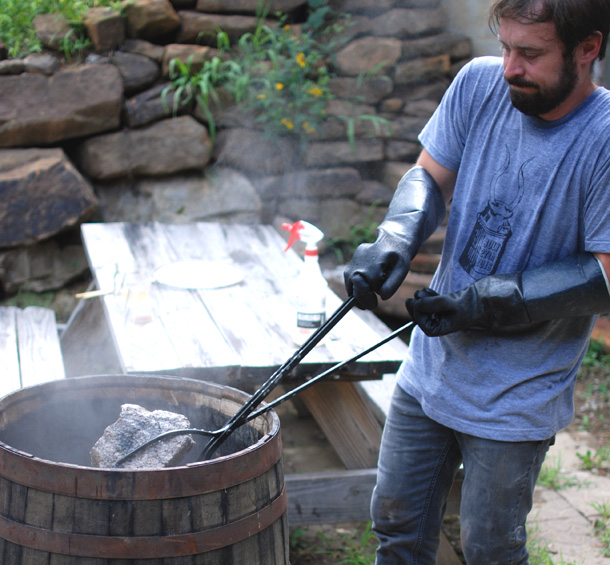BEER AND WINE LINKS 02.19.18
The Craft of Balance.
This feels like a Noah’s Ark issue of beer links, with many related stories, mostly in pairs. But before getting to those, in my favorite of the week Pete Brown writes about balance.
My wife Liz has much lower tolerance for chill heat than me. She had a tiny spoonful of it, and just managed to say ‘That’s gorgeous” before the screaming started. ‘Never bring that near me again,” she said between gulps of water. But a couple of days later, when I heated up the last of it for my dinner, she couldn’t resist having another taste. She knew it was going to hurt, but she was compelled to try the incredible depth and layering of flavour once more.’
Ale better: how craft beer found its mission.
The Business of Inclusion — Beer’s Unique Intersection of Community and Commerce.
Craft brewers seek to involve more African Americans.
The headline from Good Beer Hunting (second link) states what seems so obvious that you wonder why more breweries aren’t more proactive about making their businesses more diverse for simple economic reasons. Their responsibilities to communities they expect to support them should be equally obvious.
Getting Defensive — Analyzing the Arguments in Stone’s Keystone Lawsuit.
Does Stone Have a Case?
There’s an academic study to be had by somebody who has the time and savvy to sift through social media — I’m thinking mainly Twitter — and analyze both positive and less positive, even snarky, responses to Stone Brewing taking on “Big Beer.” It could tell future historians much about beer circa February 2018.
Regardless of the outcome, Stone Brewing is further establishing themselves as a hero to craft beer fans and as a leader in the ongoing craft versus macro conflict.”

Living Up to Local — Craft’s Big Brewers Partner With Small Agriculture.
Independent Breweries & Brewery Leaders Named 2018 James Beard Award Semifinalists.
The last month has been pretty good for Sean Lilly Wilson at Fullsteam Brewery in North Carolina. Fullsteam won three Good Food Awards (top link) and he is a semifinalists for a James Beard award. So is Jester King Brewery co-founder Jeffery Stuffings, pictured above during a collaboration brew at Scratch Brewing. They walk the walk and they talk the talk about connecting breweries to local agriculture. Consider this from Wilson.
I’ve come away with profound respect for those who farm for a living. If a beer doesn’t work out to our liking, we can brew a new batch and have it ready within two to four weeks. A career farmer has thirty or so chances to get it right in his or her lifetime. Thirty chances to understand the crop’s soil, sunlight, and water needs-assuming the weather cooperates in the first place. All of this makes me even more impressed by farmers who venture into the unknown, planting rows of heirloom grains, building trellises for local hops.”
Allagash’s “million pound initiative” directly supports sustainable agriculture in Maine and creates connections within the Maine community that may be as as valuable. Smaller breweries work on a smaller scale, but often using ingredients that wouldn’t scale any way. Consider, for instance, Fullsteam’s annual call for persimmons. Stuffings — who organized a seminar on the topic, A Practical Perspective on Foraged and Agriculturally Based Beers, at the 2017 Craft Brewers Conference — and Wilson have been particularly active educating other brewers about what might be called community beers.
Reeling in One of Portland’s Finest Dive Bars.
One Practical Thing.
Circling back to balance and diversity. The Guardian story led UK food writer to suggest that a £3 Pint Project would also make better beer inclusive for the working class. That provoked a quick post from Boak & Bailey (second link).
Big, rare, strange craft beers naturally attract a lot of coverage because they’re different and come with some sort of story, but that can add up to a sense that (to borrow CAMRA’s controversial phrase) they are ‘the pinnacle of the brewer’s art’ and that if you’re drinking anything else, you’re slumming it. Why bother? Really, you should sell an organ or two, or skip your lunchtime avocado feast to cover the cost of the upgrade.”
Although it might be bad social science to equate rural communities and dive bars where people who may not be able to afford more expensive alcohol drink, they represent a socioeconomic divide in this country that has become more obvious in the last couple of years. Also, I know better than to hold up Portland, Oregon, as a bastion of racial diversity. Such facts should not be overlooked, but there sure is something to be said for casual friendliness, and maybe beer deserves some of the credit.
On the most recent trip, my wife wanted to play pool. The gents manning the table graciously invited her to play. There’s a casual friendliness here that you don’t find in most snobby beer bars.”
MORE BEER; JUST THE LINKS
– New Brewing in Old World Wisconsin.
– In the ’50s, using a cartoon bear to advertise beer was totally fine.
– Forget the Hype, Where Are The Locals Drinking?
WINE
Why I use phrases like ‘tobacco leaf,’ ‘black fruit’ and ‘jammy’ to describe wine.
Another example of something written about wine that could be said of beer: “And maybe we’ve lost something by focusing too narrowly on wine’s flavors.”
FROM TWITTER
Mobile coolship up at @FairStateCoop for the next couple nights. pic.twitter.com/el1tt76e6o
— FunkFactory Geuzeria (@FFGeuzeria) February 13, 2018